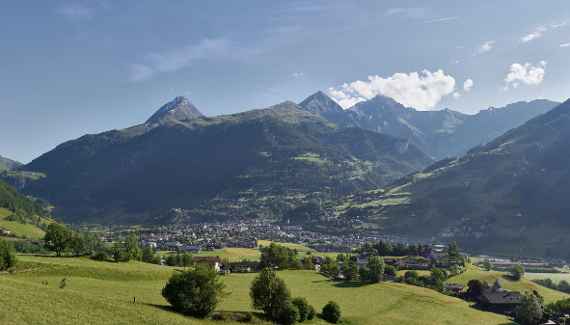The protective function of forests is particularly important in alpine regions of Austria especially for the sustainable protection of settlement and economic areas, roads or other infrastructure facilities against natural hazards such as avalanches, rockfall, landslides and floods.
At the same time forests, including those with a protective function, must be considered multifunctional. It provides a habitat for many living creatures, it is used for forestry to produce the sustainable raw material timber, it supplies clean water, filters the air and serves as a leisure and recreation area for the people. In many regions the protective forest is also part of the cultural heritage as its important protective function has been known for many centuries and without it development would not be possible. A good example of this are the protective forest areas above the UNESCO World Heritage Site Hallstatt.
The map of potential protective forests identifies over 1.6 million hectares of forest with a primary protective function. That is about 42 percent of the total 4 million hectares of forest area in Austria. Almost every fourth Austrian benefits from protective forest as a green, cost-effective and sustainably effective protective infrastructure.
A sustainable assurance of the protective function as well as improvement of the protective forests is therefore an important element of the Austrian forest policy. Even though almost half of Austria is covered with forest its condition is partly not according to the target condition due to a variety of factors. Therefore there is a need for action in the following topics:
- Lack of rejuvenation: Especially in protective forests structurally rich stands are necessary. According to the Austrian Forest Inventory the important regeneration is missing on many areas and there is an acute need for action for maintenance and regeneration measures on about 300,000 ha.
- Changing society's demands on the forest:The forest has always served as an important basis of life for society. The forest provides the raw material timber, furthermore food such as mushrooms or berries and also serves as an important resource in agriculture. Whereas in the past even the litter was used or grazing animals were driven into the forest, today the forest mainly serves as an important recreational area for the general population. This concept of multifunctional use is lived practice, nevertheless it needs a respectful coexistence and this especially in the protective forest.
- High wildlife influence: Forests are the habitat of many wild animals. Buds, fresh shoots or sometimes even pieces of bark are very tasty and are eaten with pleasure. All this is not a problem for the forest, as long as this game influence remains manageable and enough healthy trees survive. If the game level is too high and the animals are additionally stressed this may cause big problems in the protective forest. The natural regeneration cannot establish itself undisturbed, young trees are missing. Especially in protective forests, however, there is a need for stands rich in structure with small and large trees next to each other. Large-scale concepts that consider wildlife management as well as tourism and recreational guidance should help to sustainably improve the situation in protective forests.
- Climate change: The anthropogenically driven climate change is causing changing conditions in Austria. Not only temperatures are rising, but extreme weather events are also increasing. Long periods of heat without sufficient precipitation as well as strong storms, extreme snowfall or ice formation cause great damage to the forest. Especially in the protective forest this means a limited protective functionality, the forest can no longer fulfill its task as protection against natural hazards or only to a very limited extent. Therefore technical structures are often needed to replace the protective effect for the meantime.
- Protective forest management: Protective forest management can be particularly challenging. The protective forest areas are often difficult to reach and the management measures are all the more expensive in return. However these interventions are absolutely necessary to maintain the protective functionality and with stagnating timber prices this is a difficult job! To improve the situation new forms of cooperation and financing are needed.
The need for action for protective forests is already reflected in the Austrian Forest Strategy 2020+. Field of action no. 5 deals specifically with the protective function of Austrian forests. The reason for the immediate preparation of the action programme in 2019 were the deficits and risks identified in various studies and audit reports, inter alia by the Court of Auditors and the consequences of the latest extreme events.
At the request of Federal Minister Elisabeth Köstinger experts from the Federal Ministry of Agriculture, Regions and Tourism, the Provincial Forest Services, the Forest Engineering Service for Torrent and Avalanche Control, the scientific community, research, forest owners, hunting, environment and nature conservation, tourism and other stakeholders prepared the action programme "Forests protect us!".
The action programme was adopted at the Council of Ministers on 22 May 2019. It comprises 10 flagship projects in 4 target corridors and a total of 35 milestones that, according to the current government programme, should be fully implemented by 2024.

